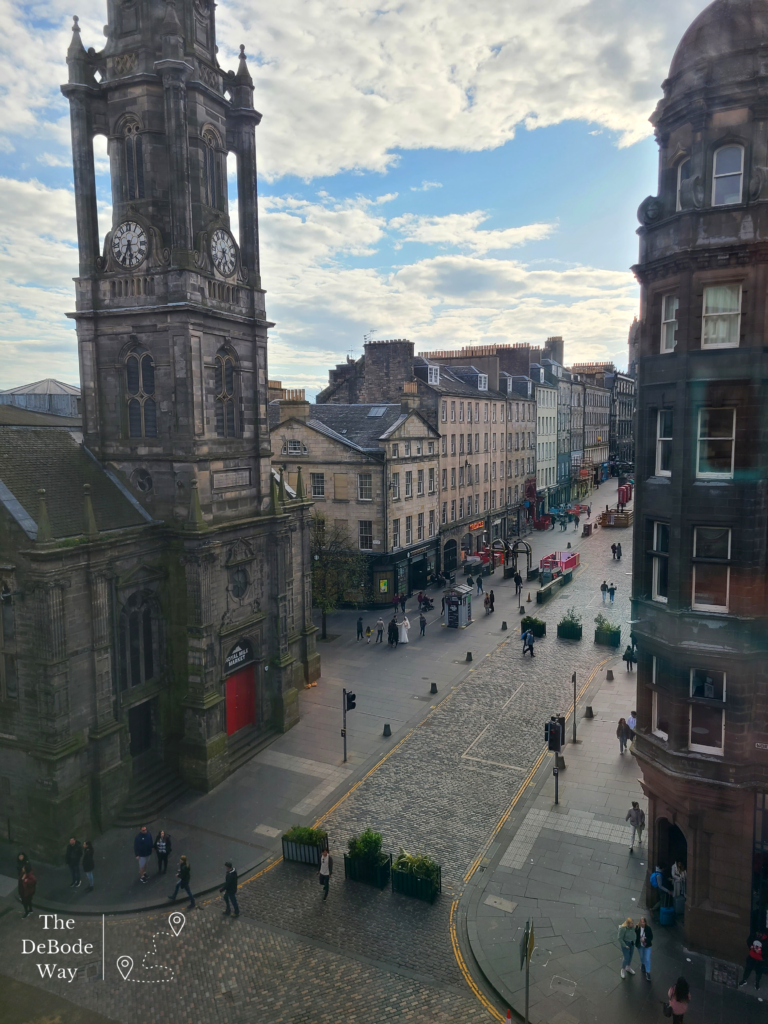One of the lessons we’ve learned since we started traveling is that travel can be a very resource-intensive thing to do, and not just in the ways you might expect. Yes, travel is expensive, or at least it can be, meaning it can use up your financial resources in a hurry. However, travel can often mean you’re using a larger amount of other resources, too. Not sure what we mean? Read on.
Be Mindful – Fuel, Gas, Petrol, Emissions
First is the travel itself. Regardless of how you travel, odds are you’re burning some kind of fuel to get there. If that’s concerning to you, we’ve found that certain websites (Google Flights, for one) have recently started telling you the CO2 implications of your flights. Emissions are calculated by the seat you choose (aka, amount of space you’re taking up), the density of the air during the time of day you will be flying, the wind speed, temperature, height of travel – so many things impact your carbon footprint. Don’t like what you see? Pick a different route, seat, or maybe even a different method of transportation. Not possible? Consider purchasing carbon offsets to help reduce the long-term influence of your travels on the environment. The UN’s International Civil Aviation Organization has a neat tool to help you calculate your emissions.
Similarly, if you’re going to rent a car, play around on Google Maps – or your favorite maps website – to find the most efficient routes that don’t use as much fuel. Or, rent an electric car or a bike to get around (Hertz has a new electric fleet we can’t wait to try). Take the electric metro or train. Some European cities, such as Amsterdam, aim to be free of gasoline engines (boats included) in just a few short years. More and more city centers are banning cars, turning their streets into pedestrian walkways, with scooter or bike rental centers everywhere for longer-distance travel. So many places that were once heavy with the smog of gas-powered engines are sitting under clear skies and you can actually SEE what you came to see. Novel.

Reusable Bottles & Containers
Second is the stuff you use while traveling. Think about it. Thirsty and want some water? Most likely you’re reaching for a plastic bottle of water, right? Hungry? Probably you’re going to grab something that uses single-use plastic packaging or cutlery (though regulations in certain parts of the world have started reducing this likelihood). Taking your medicines with you? Often that involves smaller, daily packages and more of them. If that bothers you, there are other options.
For example, we take reusable water bottles with us when we travel. They need to be empty when you go through security at the airport, but once you’re through, we’re finding an increased number of water bottle filling stations at airports of all sizes and all around the world. Fill up before you get on the plane so you can wave away the tiny plastic bottles of water during the flight. When you get where you’re going you can fill up from the tap if it’s safe to drink (many European cities have public water taps in the street) or purchase huge jugs of water to last many days instead of small, single-use plastic bottles of water. Make sure your jugs are either recycled or turned in to be cleaned and reused when you’re done with them.
Similarly, we take reusable containers for our medicines/vitamins, toiletries, snacks, and the like. We clean them when we’re done and pack them back home for next time without leaving our waste behind. For sure, it’s not always possible to do this, but it’s getting easier and is happening with an increasing number of things we take with us. Our favorite little containers for toiletries and jewelry are Cadence capsules. You can color code your containers and tiles so you always know what you’re reaching for, plus they are magnetic so they stick together in your bag and the lids stick to the sides so you don’t lose them. Genius!

Even your luggage matters. Make investments in good quality, responsibly made bags that will last you for years rather than one trip when it’s been smashed under someone’s overweight bag. We’ve had our current set of luggage for six years now (that’s centuries in luggage years!) and it sees LOTS of airline abuse but still looks almost brand new. We give it a wipe-down inside and out when we get home before we pack it away for next time, which is usually before it has a chance to collect any dust! This not only cleans it and eliminates anything nasty we may have picked up wheeling through the streets, but it gives us a chance to inspect it for any issues so we aren’t surprised the next time it gets pulled out to pack.
Reduce Your Luggage Weight and Size
Third, we take time packing clothes and shoes with us which reduces the number of items we need as well as the weight we must lug around. For example, we’ve discussed before that we often do laundry while traveling. That means we can take fewer clothes, which often translates to smaller – and lighter – suitcases. This also contributes to the lifespan of our luggage – it isn’t broken from being overweight. We focus on lightweight, natural fabrics that resist dirt and odors and allow multiple wears without having the person next to you wrinkling their nose. For those things that should only be worn once, we have found detergent sheets that take up no space or weight in our bags and have zero plastic or water waste to quickly do some laundry in the sink or tub. This is where those lightweight, natural fabrics come in handy again – quick air dry! We usually allow for two pairs of shoes in case one gives us trouble somewhere along the way. Typically, this means a pair of comfortable walking shoes and a nicer pair of shoes to dress for dinner or events, but this varies depending on destination. If you do need to bring something heavy that is going to take up a lot of room in your bag, wear it! I often wear my bulky hiking boots on the plane (which are super amazing to my feet when you’re walking all over in the airport!) and tie a sweater around my waist if it won’t fit in my bag.
Keep in mind that most of the time, your suitcase is limited to 50 pounds for most airlines, so packing a lighter suitcase might even lessen the impact on your checkbook as well. If you’re carry-on only or have airline status, even better – free bags in most cases! In turn, that can be less weight for a plane (or whatever transportation mode you choose) to carry, which means it can be more fuel efficient. Okay, we’ll admit that if we were the only ones taking a smaller suitcase, the increase in fuel efficiency would probably be negligible. Fine. But we aren’t the only ones. And what would happen if more and more people did the same? That can quickly add up to a real difference. Not to mention, it’s far less to trip over at the luggage rack on the train, no wait at the luggage carousel in the airport, your cab driver and airport luggage handlers will thank you for not busting their back while heaving your bags for you, AND you can rent a small, more fuel efficient car. Wins all around!

Let’s be clear: we’re not suggesting you have to completely rethink the way you travel, but what if you did just a little? We’re also not saying you shouldn’t travel. Far from it! However, there are small things you can do (or even a few big ones) that can reduce your impact while traveling. If you have the ability, why not? We only get one shot in our lifetime at helping protect this planet we’re traveling to see, and we should. Even the smallest changes can make huge differences that future generations won’t have to face, we hope.
Remember: traveling is great but traveling responsibly is even better.
Happy travels!




